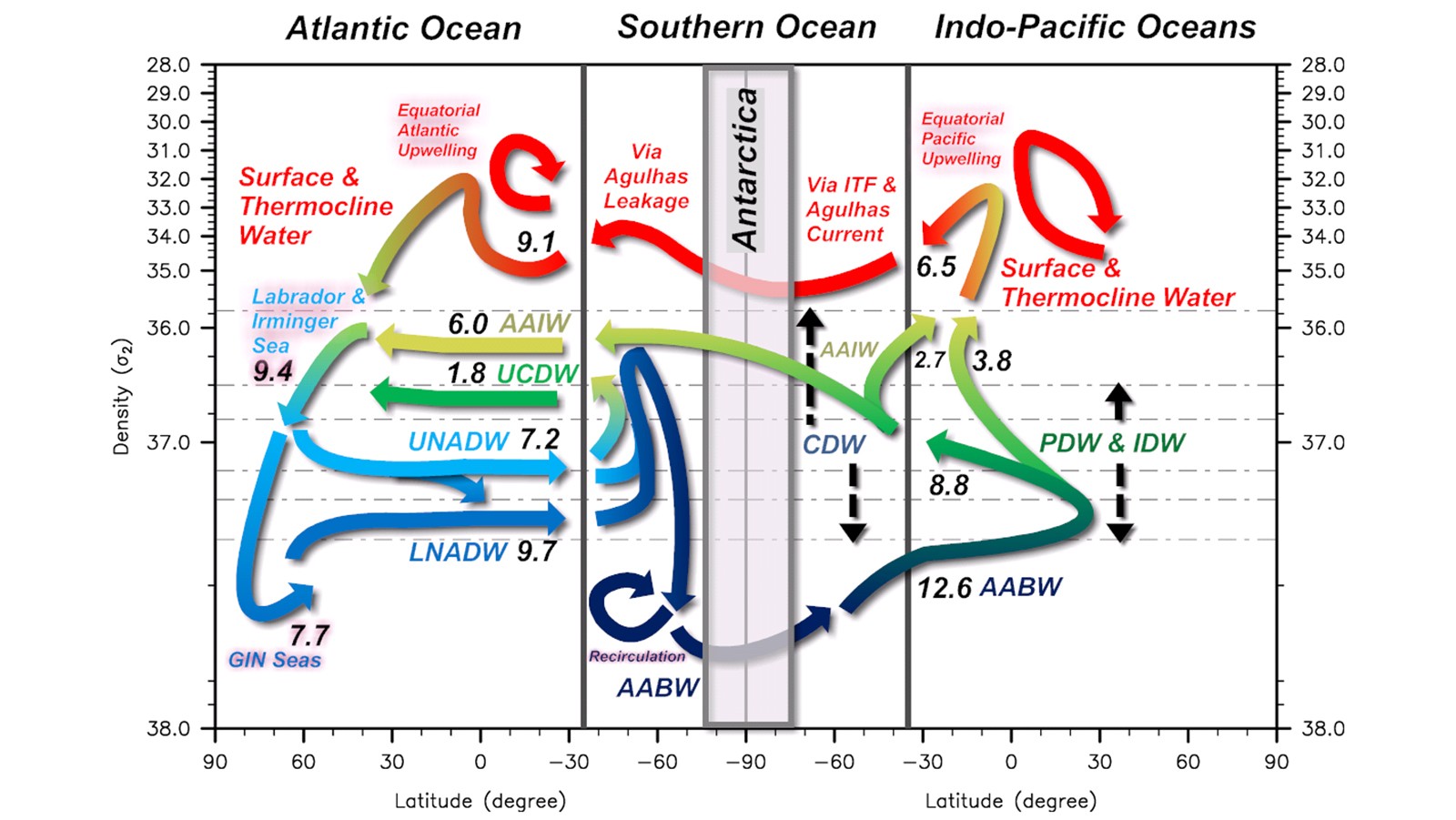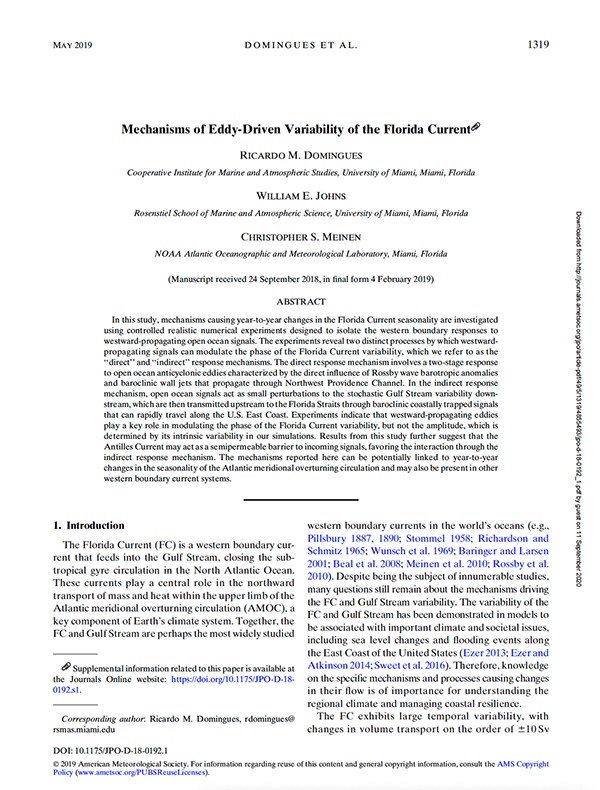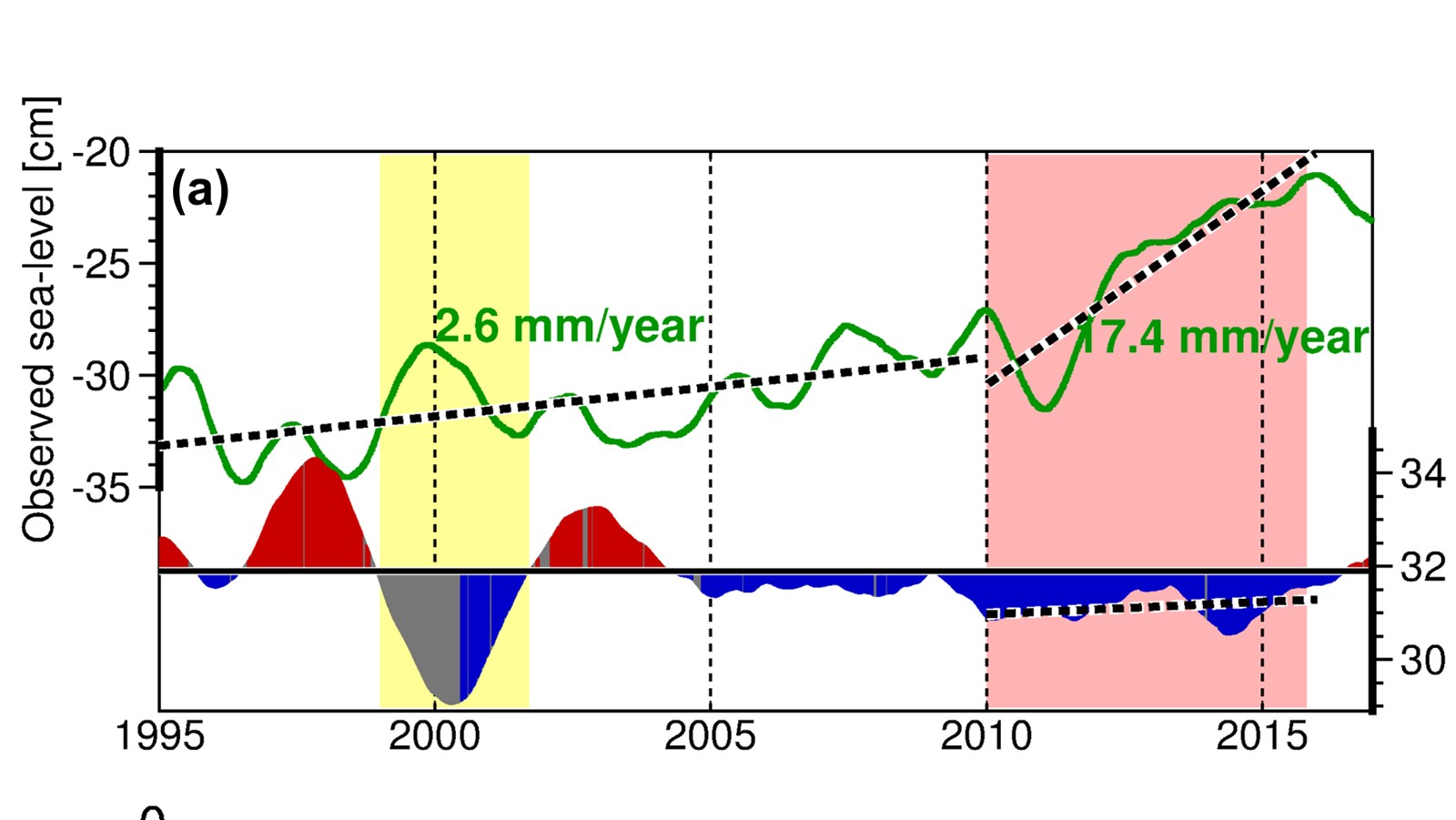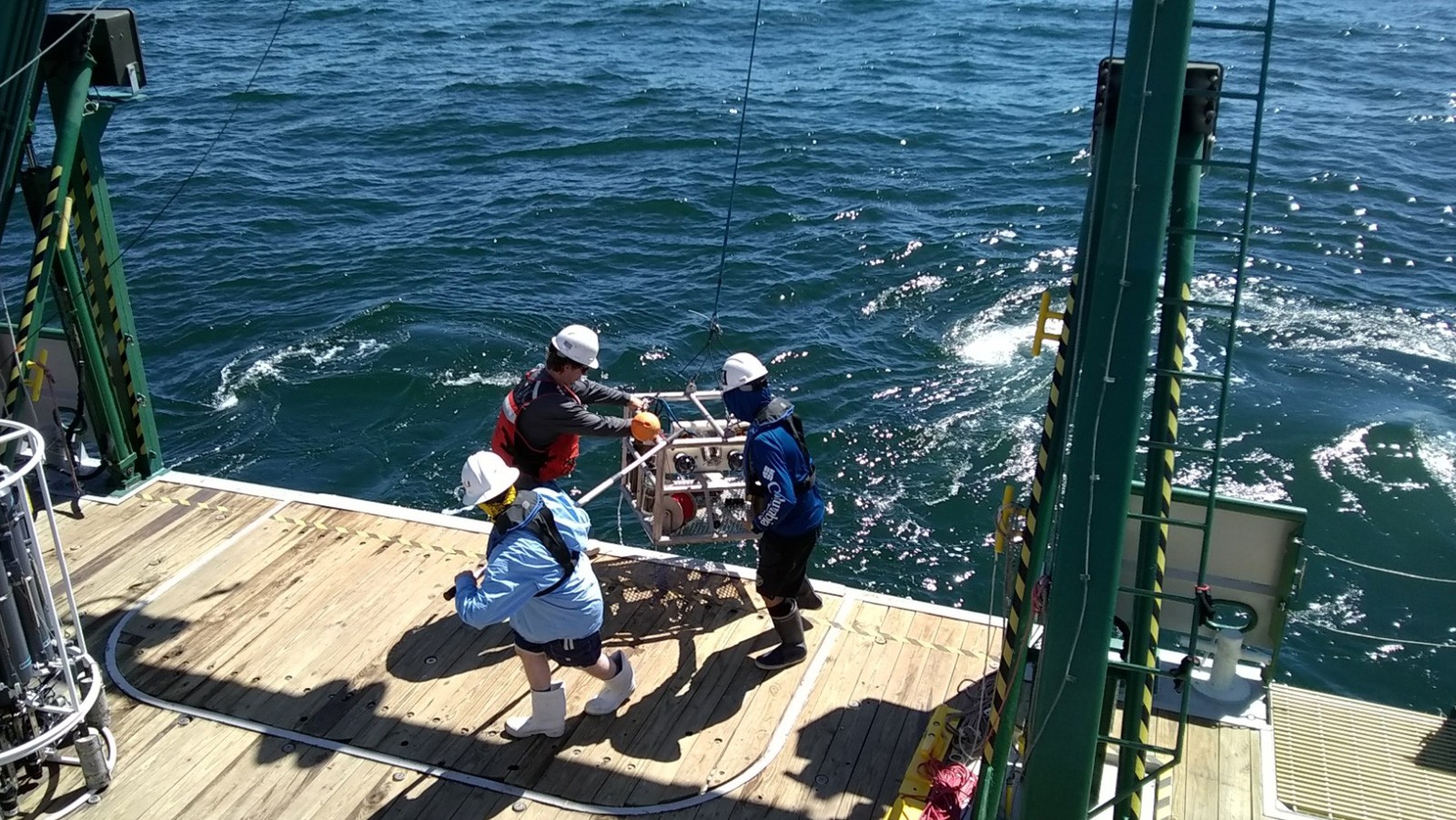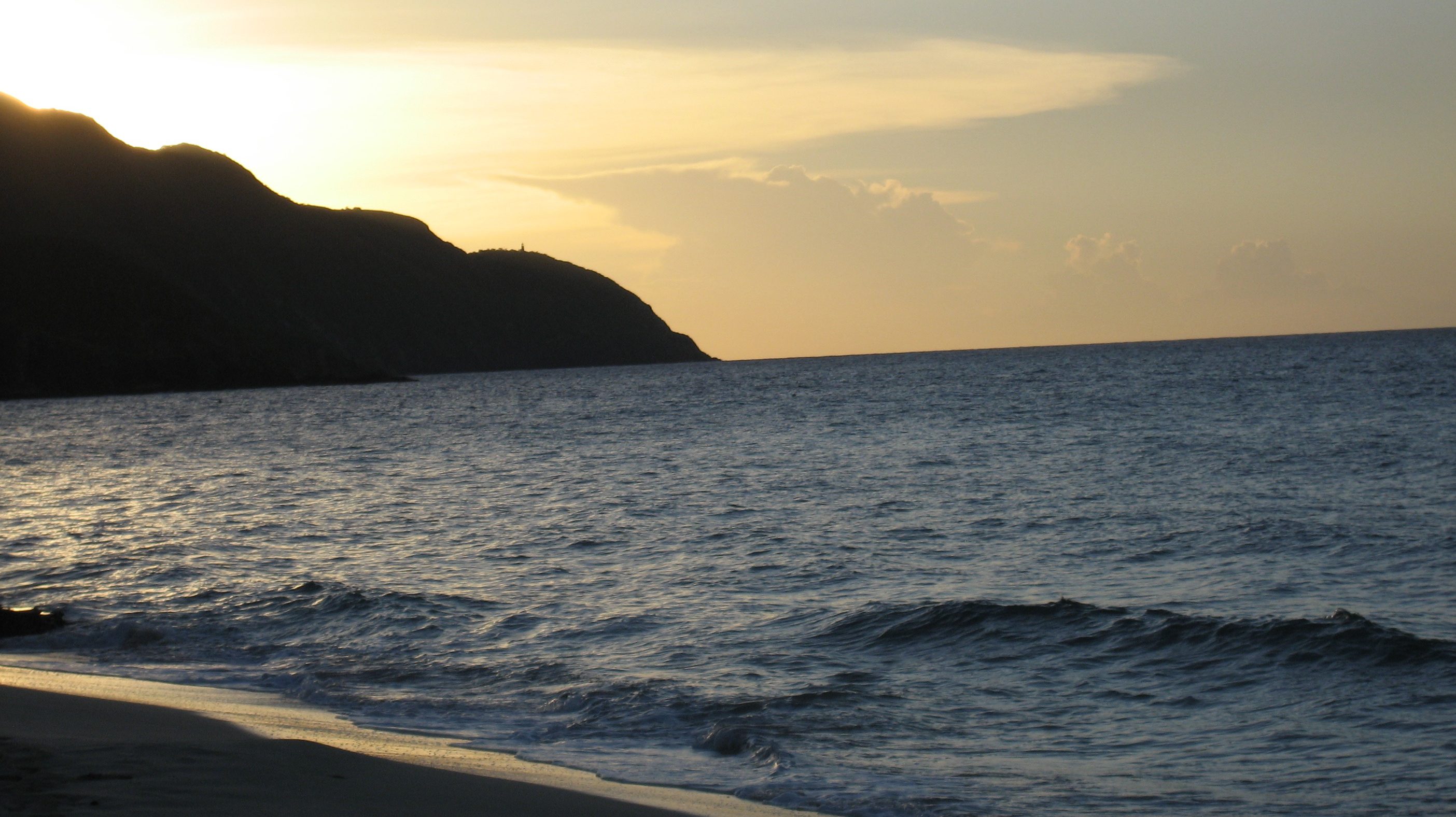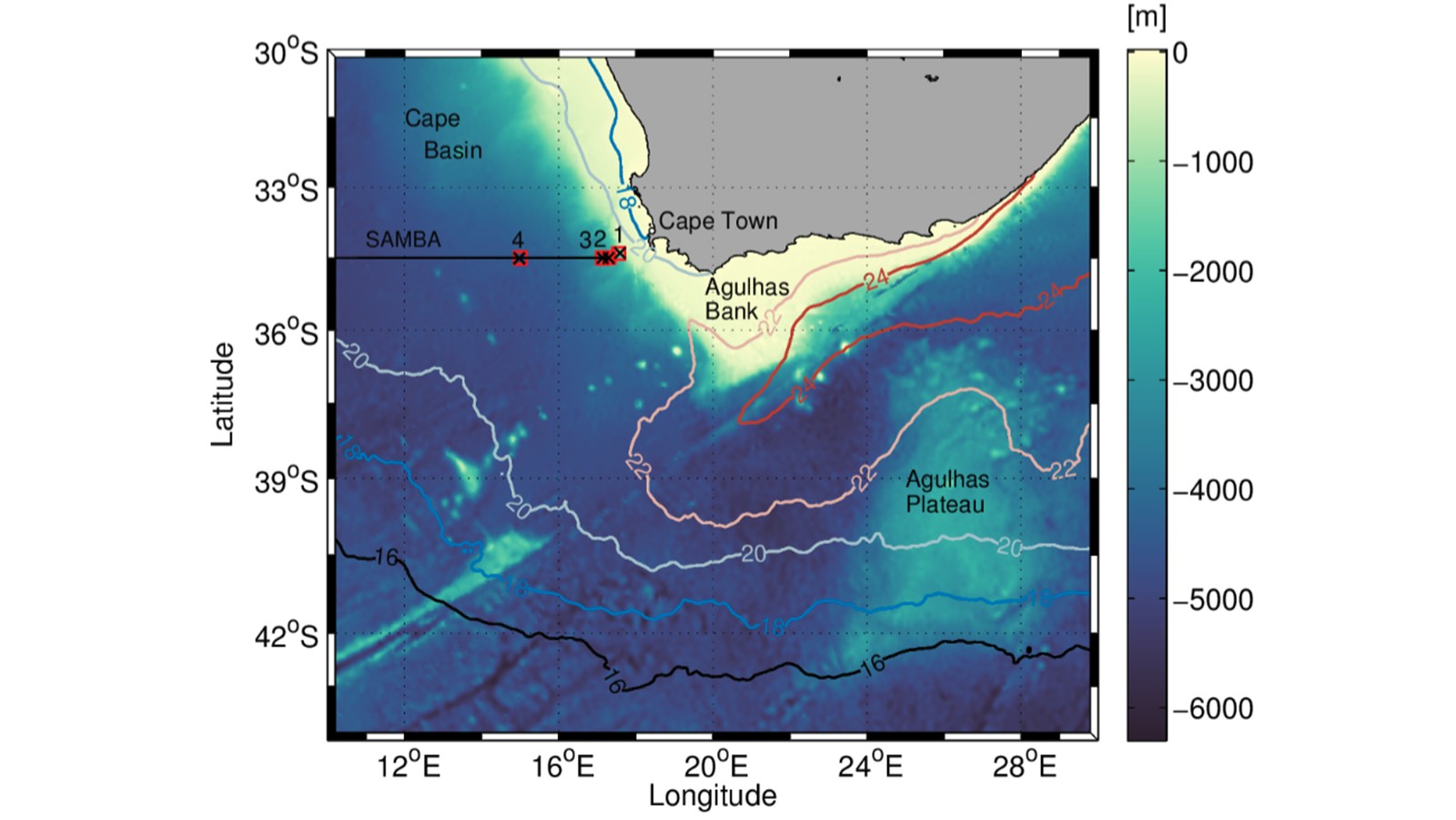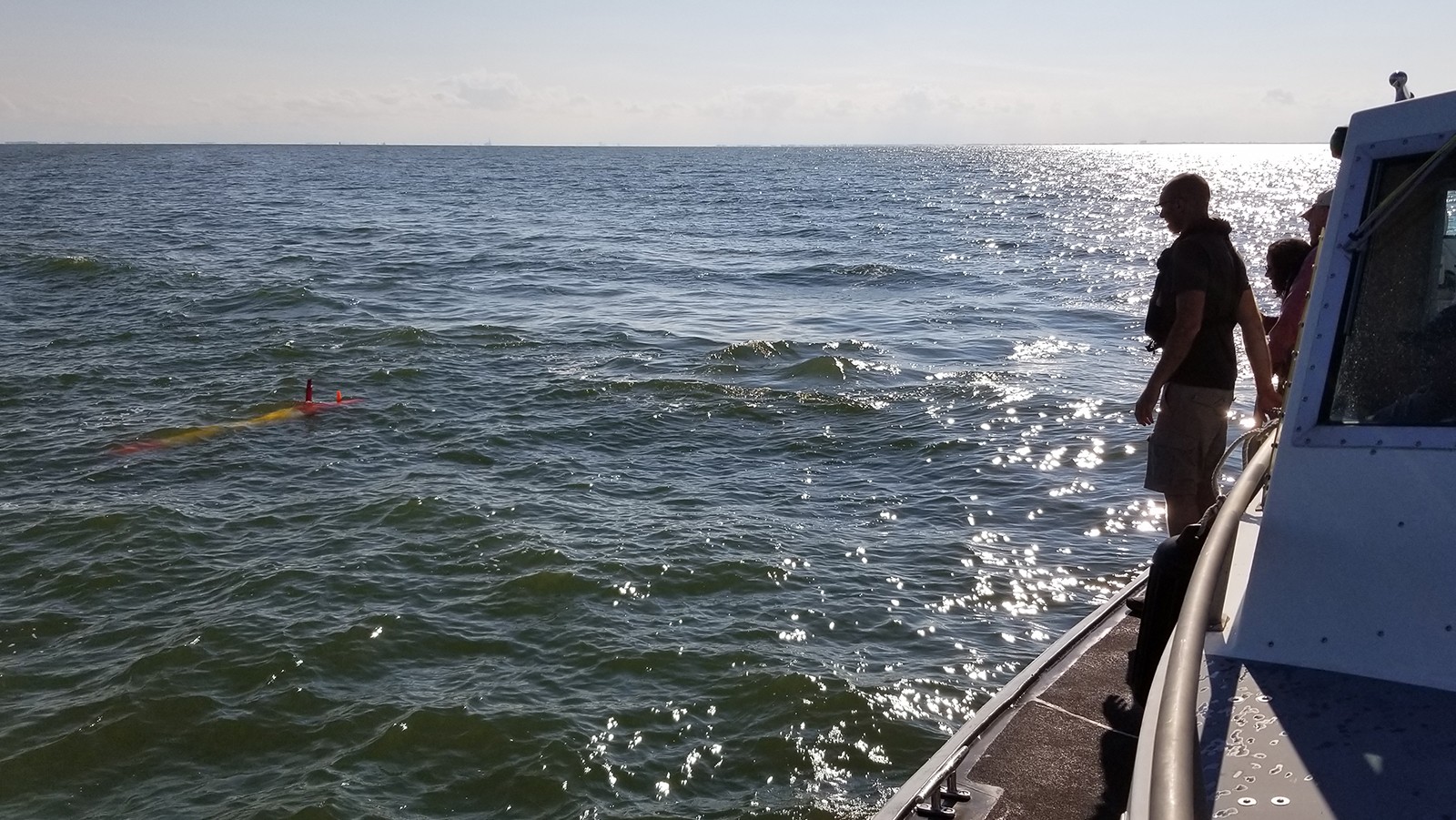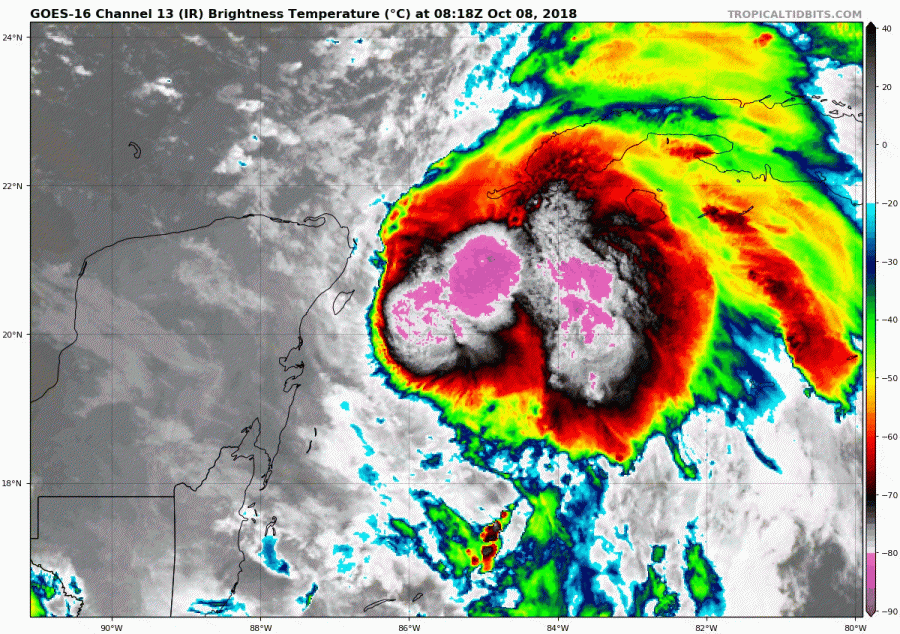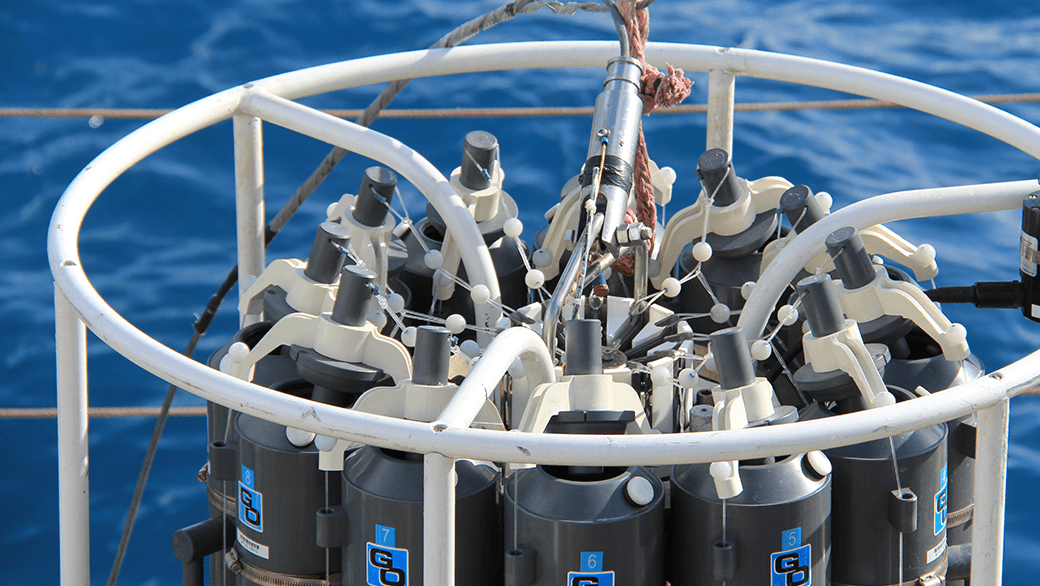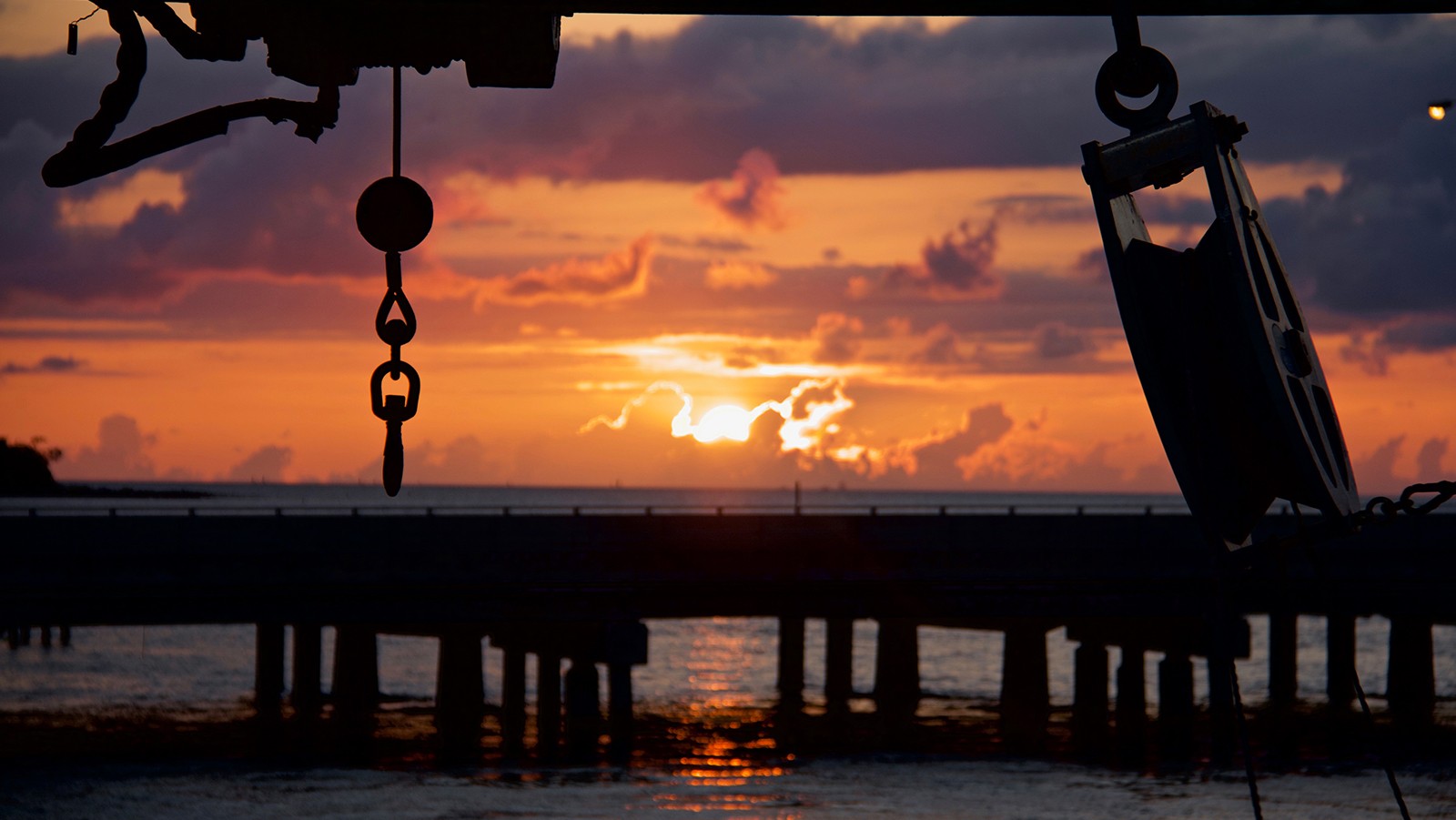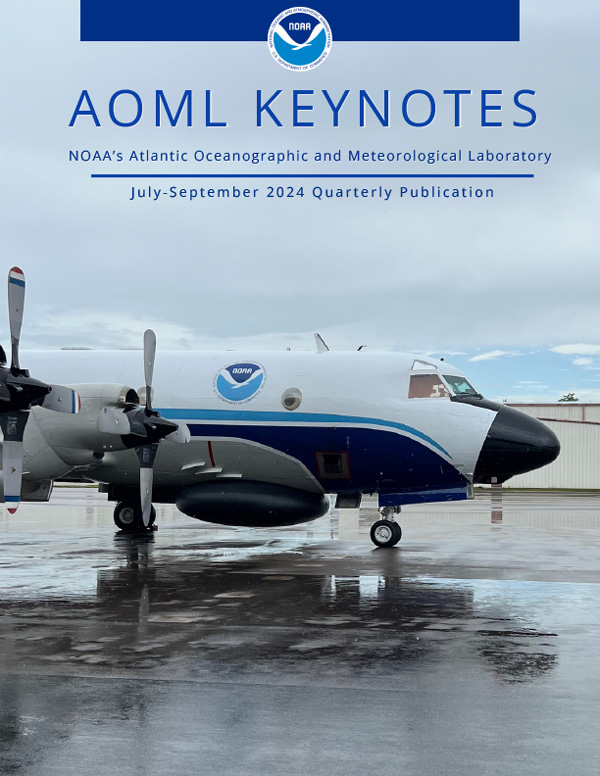Domingues, R. M., Johns, W. E., & Meinen, C. S. (2019). Mechanisms of Eddy-Driven Variability of the Florida Current. Journal of Physical Oceanography, 49(5), 1319-1338.
Abstract: In this study, mechanisms causing year-to-year changes in the Florida Current seasonality are investigated using controlled realistic numerical experiments designed to isolate the western boundary responses to westward propagating open ocean signals. The experiments reveal two distinct processes by which westward propagating signals can modulate the phase of the Florida Current variability, which we refer to as the “direct” and “indirect” response mechanisms. The direct response mechanism involves a two-stage response to open ocean anticyclonic eddies characterized by the direct influence of Rossby-wave barotropic anomalies, and baroclinic wall-jets that propagate through Northwest Providence Channel…
